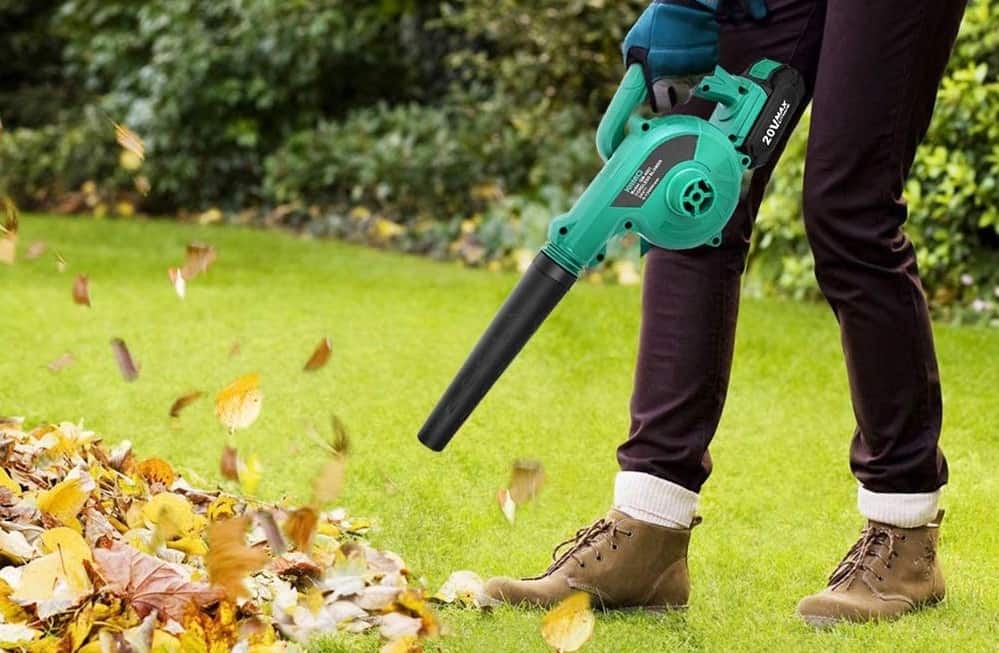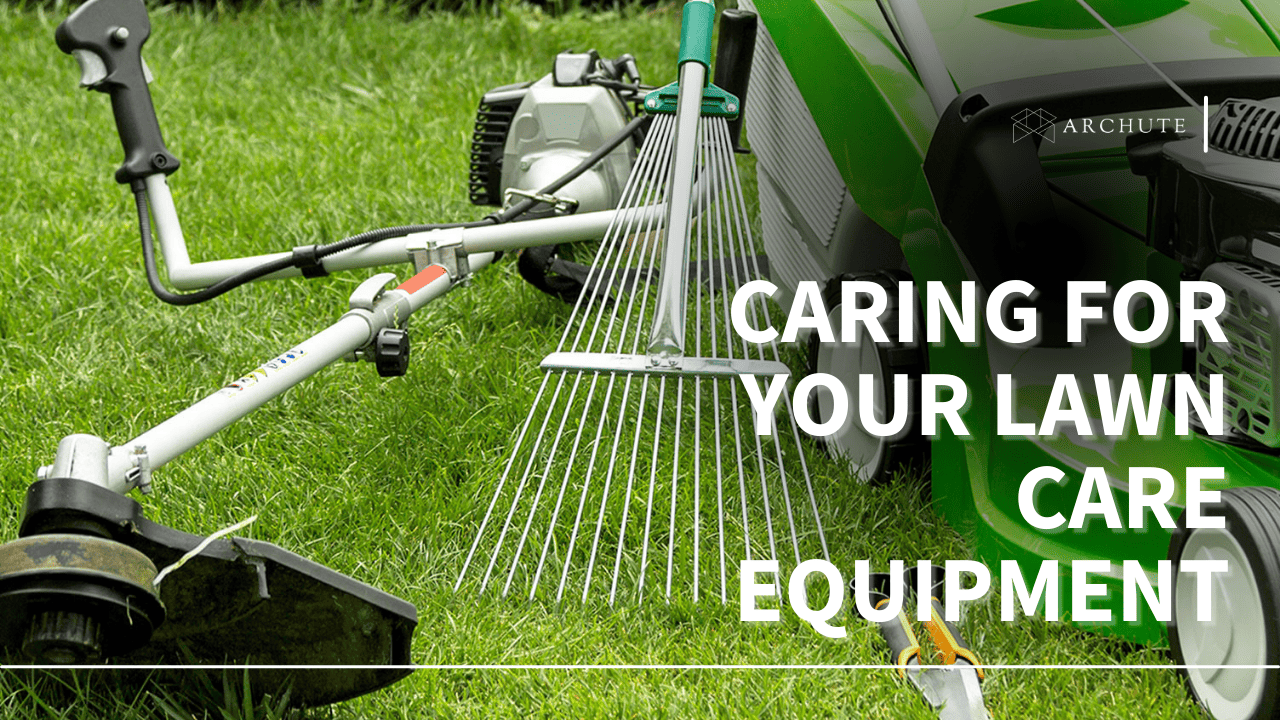Pothos plants are the most typical houseplant; they can be table or hanging plants. The snow queen pothos plant is easy to grow, care for, and flourish in unfavorable conditions. They have pure white variegation with deep green background on the leaves.
There are several types of pothos plants grown all over the world. The snow queen pothos, golden pothos, and marble queen pothos are the most common variety of the pothos families. These can be an excellent starting option if you are new to growing plants.
Let’s learn more about the snow queen pothos, how they are grown, how to care for them, the problems you may encounter with them, and how to fix them.
What Is Snow Queen Pothos?

Pothos is a taxonomic flowering plant in the family tribe potheae. It is a cute indoor vine plant with a white marveling texture and bright green leaves. The plants can be planted in a container or hanging baskets and placed on the dining table or living room.
The snow queen pothos is great for air purifying, which will help retain fresh indoor air. They will also help eliminate any bad odors in a room. The pothos will also help relieve eye irritation which is caused by staring.
Now that you understand snow queen pothos, let’s dive in and look at how to plant and propagate this plant.
How To Plant Or Propagate Snow Queen Pothos Plants?

Image Credit: living-mudflower.blogspot.com
Planting the pothos snow queen plants is easy and widely available in garden stores and nurseries. Snow queen propagation can also be easily achieved through cutting.
To ensure you have a healthy plant, sanitize the tools you will be using before you begin. We have prepared some tips that you could use to ensure that you have a healthy plant:
Step 1
The essential thing to do first is to ensure your tools are clean and sanitized. Then you choose a strong-looking shoot and cut it a half-inch below a node. Choose a four to six inches long shoot with several sets of leaves. Ensure that you cut.
Step 2
The second step is optional but recommended. It would be best to dip the end of the cutting in a rooting hormone powder to help kick-start the growth. You could opt to use Garden Safe Brand TakeRoot Rooting Hormone, which is super effective for new root growth just from cutting.
Step 3
The third step is to place the cutting in a blow with fresh water. You will then place the bowl where it can get bright indirect light. Remember that placing it under direct sunlight can cause the leaves to scorch or dry the roots.
Step 4
Finally, you will need to observe and see if the plant starts to grow. In three days to a week, you should be able to see the pothos roots growing. This means that the plant is ready to be transplanted. Like other garden plants, this tropical plant can be planted outdoors, or you could plant it in a pot or indoor garden, or a container if you intend to be indoors.
If you are planting it in a container, using a smaller pot or container with fresh soil is best since the pothos family prefers crowded roots. Also, ensure that your planting soil contains organic compost, peat moss, and perlite.
Basic Snow Queen Pothos Care Instructions

Image Credit: reddit.com
1. Propagation
As we have mentioned above, snow queen pothos propagation is super easy. To ensure the process goes smoothly, you should ensure your tools are clean. It would be best not to worry about trimming the stems in the mother plant since new growth will still grow from the node.
This means that the mother’s growth will not be affected. Trimming a mother plant regularly will encourage new life or growth and give you a fuller plant.
2. Potting And Repotting
When potting the snow queen pothos, ensure that your pot or container has enough drainage holes on the bottom. Also, you don’t need to report often since the snow queen pothos likes to be rootbound.
However, you should ensure no loose soil if you are to report. Also, remember that the reporting will improve the soil nutrient and give great soil aeration.
3. Soil
With proper care, the snow queen pothos will be bushy or up to six to ten feet long. A pothos plant will grow well in any high-quality and fast-draining soil. Remember to keep the soil moist and in very wet conditions that can cause the roots to rot. Your plant will also need frequent watering during summer, which is unnecessary during winter.
Also, it is important to ensure that the soil ph is between 6.1 to 6.5. Add perlite, peat moss, or organic fertilizer to your fresh potting mix to give you a healthy growth foundation. In addition, you can opt to purchase the best potting soil, like Nature’s Care Organic Potting Mix, to make your work much easier.
4. Fertilizer
Snow queen pothos care is inexpensive and does not need too much little fertilizing. It is even advisable that you do not use any additional fertilizers. However, you can opt for organic fertilizers if you want to use fertilizers. For example, you could use fertilizers like seaweed solutions and worm castings.
5. Light
The pothos plant will do well in indirect sunlight or partial light. Although you should know that the plants will work under low light conditions, too, they should prefer moist soil and indirect light. A few hours under direct sunlight is okay; you should avoid leaving them under direct sunlight for a whole day.
6. Humid Conditions
Ideally, the humidity for the pothos is between 50% to 75%. The plants will strive in warm temperatures in tropical or subtropical climate areas, but you can always keep the plant moist if you live in dry climates. However, you should also avoid drenching the leaves since it can cause fungal issues.
Problems You May Encounter With The Snow Queen Pothos Plants

Image Credit: plantsinabox.com.au
Like other pothos plants, the snow queen pothos will have issues with diseases, pests, and other plants. We will look at the major problems you will most likely encounter with these plants and how you could resolve them.
1. Mealybugs And Thrips
Mealybugs and thrips are the most common types of pests that will deal with when it comes to snow queen pothos plants. You could use horticultural oil, soap, or neem oil to deal with the pest.
2. Dust
Most of the time, the pothos accumulate dust even if they are indoors. Therefore you must wipe down the leave regularly. This will help with the appearance, but it will help with photosynthesis.
3. Root Rot
Another common issue that you may encounter is root rot. Mainly, it is caused if the plant is overwatered and fungal pathogens attack the roots. The best way to prevent root rot is to use well-drained soil and a pot with drainage holes.
How To Know If Snow Queen Pothos Have Root Rot?

Image credit: plantcaretoday.com
Root rot is a widespread problem among pothos plants and other plants. The problem can spread to the entire plant if not identified and treated on time. Mainly the root rot causes the white and green leaves to turn black or dark brown. However, the stem and leaf veins will often not turn brown or black due to root rot.
To know if your plant is affected, it will look tired at first, and then the leaves will begin to turn brown or black, and eventually, the whole plant will wilt or even die. However, the early signs of rot will help you treat and rejuvenate the pothos plant.
The practical way to get rid of rot is to ensure the soil has great drainage and the container has drainage spaces at the bottom. If the rot has already happened, you could treat the plant with a fungicide to help control the spread.
What Is The Difference Between Snow Queen And Marble Queen Pothos?

Image Credit: etsy.com
The propagating snow queen pothos and marble queen pothos have a lot of similarities. For starters, they both are grown indoors and have leaves of the same size. They may have small leaves if they grow in a container, but if planted on an outdoor ground covering, they can grow quite wide. Plus, they both have heart-shaped leaves. Additionally, the snow queen and marble queen pothos care are easy.
Even so, they have some differences between the snow queen and the marble queen pothos. We will list some of the main differences between the two plants:
- The leaves of the Snow Queen Pothos have leaves with more pointed tips than the marble queen Pothos
- The Snow Queen pothos has more chlorophyll-free tissues than the marble pathos, meaning they have a less green color. As a result, the snow queen pothos leaves 70 to 80 % white and 20 to 30% percent green, while the marble queen pothos is 50% white and 50 % green.
- The snow queen grows a bit slower compared to the marble queen pothos. Since the snow pothos has more chlorophyll-free tissue, it will grow slower than the marble queen pothos. So the snow queen pothos may be the same size as the marble queen pothos, but they take longer to grow.
- The snow queen pothos plant is more vulnerable to fungal diseases than the marble queen pothos. This way, with the snow queen pothos care, you need to pay more attention than the marble queen pothos care, but they both need great care.
- Although both are indoor plants, the marble queen pothos requires planting in a larger pot or containers, and they need more soil, which is not the case for the snow queen pothos.
- The lighting requirements of these two plants differ depending on your desired results. As mentioned in this article, the snow queen pothos plant does not need to be placed under direct sunlight, but the marble queen will require more light, not direct sunlight.
- The other main difference is that the marble queen requires more water. For the snow queen pothos care, you require a small pot with great drainage to prevent root decay, but the marble queen pothos will need to be watered frequently, especially during the growing season. Importantly, the marble and snow queens must be watered as little as possible during winter.
The marble, commonly known as snow queen pothos, requires more fertilizers. Again, as mentioned earlier, the snow queen does not need fertilizer to grow, but you could use some. However, the marble queen will need much more fertilizer to keep it more vibrant and to keep the plant healthy.
Frequently Asked Questions About The Snow Queen Pothos
1. Is Snow Queen Pothos Toxic To Pets?
Yes, snow queen pothos care can be toxic to your pets, especially cats and dogs. In addition, if the pets chew the leaves or stem, they may have issues. So if you have pets, you could consider getting a plant that is safe for the pets.
First, however, you could consider placing the pothos plant in an area the pets can’t reach. Then, if your pets eat the plant, you could contact a veterinarian immediately.
2. Why Does Snow Queen Pothos Turn Brown?
The main reason snow queen turns brown is due to root decay. This is mainly caused by a lot of water, leading to infection on the rotting. Some other issues that can cause the snow queen leaves to turn brown are underwatering too much light and other leaf diseases.
Again too much fertilizer or excess water can bring about brown spots or even brown leaf tips. To maintain a healthy plant or fix the brown spots and tips, dry your soil before watering it again. Also, avoid direct light.
3. Does Pothos Grow Faster In Water Or Soil?
The pothos plant grows much faster in soil because the soil contains the right nutrients and moisture that the pothos snow queen needs to grow. Healthy soil will make the plant healthy and strong. The soil moisture also encourages fast-growing for the snow queen types of pothos.
4. What is the Difference between Pothos Marble Queen and Snow Queen?
Pothos Marble Queen and Snow Queen are two popular cultivars of the Epipremnum aureum snow queen plant, commonly known as Pothos. However, they have some key differences in their appearance. The Marble Queen and Snow Queen varieties are differentiated mainly by their leaf coloration and variegation patterns.
The Marble Queen has large, heart-shaped leaves with a creamy-white variegation pattern that looks like marble, whereas the Snow Queen has smaller, more compact leaves with a white and green variegation pattern. This gives it a more striking appearance.
The Snow Queen also tends to have a more dense and bushy growth habit than the Marble Queen. Regarding care, both varieties have similar requirements, such as moderate to bright indirect light and a well-draining soil mix.
5. How much Light does a Snow Queen Pothos Plant Need?
Pothos plants, including the Snow Queen variety, are known for their adaptability and ability to thrive in various lighting conditions. However, the Snow Queen Pothos needs bright, indirect light to achieve the best growth and variegation.
Direct sunlight can scorch the leaves causing damage, so placing the plant near a window that receives filtered light is best. If the plant is placed in low light, the variegation may fade, and the growth may become more sparse.
If you notice the leaves turning yellow or brown, it may be a sign that the plant is getting too much light, and you should move it to a spot with less exposure.
6. What is the Rarest Pothos?
There are many cultivars of Pothos, and while some may be more difficult to find than others, there is no “rarest” Pothos plant. However, some more uncommon cultivars include the Neon Pothos, which has bright, chartreuse-colored leaves, and the Jade Pothos, which has dark green, almost black leaves.
7. What are the Hardest and Easiest Pothos to Grow?
Pothos plants are generally considered very easy to grow and are often recommended as beginner plants for those new to gardening. However, some cultivars may be more demanding than others.
The Satin Pothos, for example, is known for being more sensitive to overwatering than other varieties, while the Golden Pothos is particularly forgiving and can tolerate different lighting conditions and watering schedules. Overall, Pothos plants are low-maintenance and easy to care for, making them a great addition to any home or office.
















